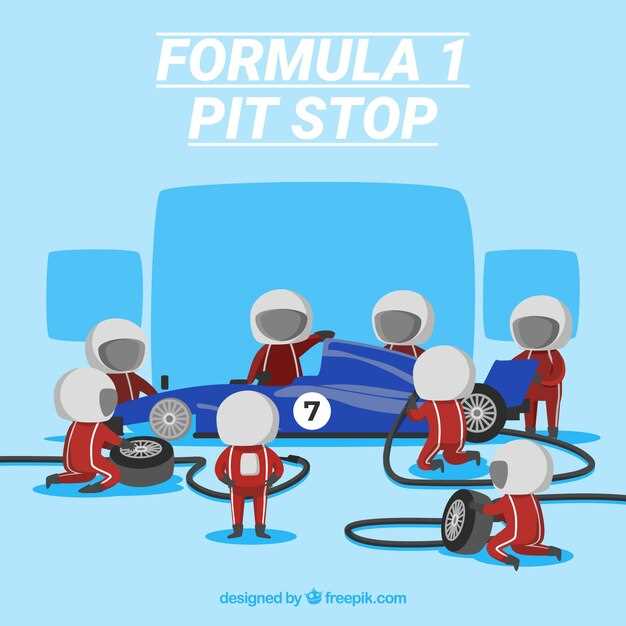
The Le Mans 24 Hours race is not just an event; it is the pinnacle of endurance racing that tests the limits of both man and machine. Held annually in Le Mans, France, this grueling race has a legacy that dates back to 1923, captivating motorsport enthusiasts worldwide. The challenge lies not only in speed but also in strategy, stamina, and the ability to operate under extreme conditions for a full 24 hours.
Competitors at Le Mans face unique challenges that distinguish this event from typical races. Drivers must be adept not only at conquering the track but also at managing their vehicles through the long hours of continuous operation. With changes in weather, tire wear, and fuel strategy, every moment in this endurance race counts. The team effort behind each participating car is crucial, as pit stops and driver changes can significantly influence the outcome.
Over the years, the Le Mans 24 Hours has witnessed technological evolution, pushing the boundaries of automotive engineering. Manufacturers constantly strive to innovate, leading to the development of cutting-edge technologies that enhance performance and efficiency. This race has become a proving ground for advancements that eventually trickle down to road cars, making it a vital spectacle for automotive enthusiasts and engineers alike.
Understanding the Rules and Regulations of the Le Mans Race

The Le Mans 24 Hours race, a pinnacle of endurance racing, operates under a set of strict rules and regulations designed to ensure fairness and safety. These guidelines are established by the Automobile Club de l’Ouest (ACO), the organization responsible for the event since its inception in 1923.
One of the core principles of the race is the classification of vehicles. Cars are categorized into several classes, including prototypes and grand touring vehicles. Each class has specific requirements regarding engine size, weight, and aerodynamics, ensuring a balanced competition among diverse automotive technologies.
Another critical aspect is the technical regulations that dictate the design and modifications permissible for participating vehicles. This includes limitations on fuel capacity, tire specifications, and the use of materials. Teams must adhere to these regulations to ensure a level playing field and maintain the integrity of endurance racing.
Driver regulations also play a significant role in the race. Teams are required to have multiple drivers, and there are stipulations about the maximum driving time and mandatory rest periods. These rules are in place to enhance safety and ensure that teams can sustain high performance over the race’s grueling duration.
Furthermore, the race employs a unique scoring system that rewards not only speed but also reliability. Teams must demonstrate that their vehicles can withstand the 24-hour challenge, as reliability is just as crucial as outright speed in an endurance event.
Moreover, teams are subject to scrutiny through technical inspections before and during the race. These inspections help enforce compliance with the regulations, ensuring that all vehicles are race-ready and safe for participants. Failure to comply with the regulations can result in penalties, including disqualification from the race.
In summary, understanding the rules and regulations of the Le Mans race is essential for teams and fans alike. These guidelines shape the competition, emphasizing the endurance aspect of racing while ensuring an equitable and exciting event for all participants.
Strategies for Teams: Preparing for Endurance Challenges

In the world of endurance racing, particularly at the prestigious Le Mans 24 Hours, teams must implement meticulous strategies to conquer the unique challenges presented by such a demanding event. Preparation is key not only in terms of vehicle performance but also regarding driver management and pit stop efficiency.
One vital aspect is vehicle reliability. During the extensive race duration, cars must endure extreme conditions that test their limits. Teams should conduct thorough pre-race testing to identify potential points of failure. Regular maintenance schedules, including inspections of critical components like brakes, suspension, and fuel systems, are essential to ensure optimal performance throughout the race.
Driver rotation is another crucial strategy. With multiple drivers sharing the responsibility, it’s imperative to develop a schedule that allows adequate rest periods. This ensures that each driver remains alert and performs at their best when on the track. Teams often utilize simulators prior to the event for drivers to get accustomed to the car and the circuit, allowing them to strategize effectively during their stints.
Pit stop efficiency can drastically impact race outcome. Teams should analyze previous Le Mans events to refine their pit strategies. This includes practicing quick tire changes, fuel refills, and minor repairs. A well-executed pit stop can save valuable seconds, making a difference in a race that lasts 24 hours.
Weather conditions can vary significantly during the race, creating additional challenges. Teams need to prepare for changing conditions by evaluating tire choices and adjusting their strategies accordingly. Clear communication and quick decision-making during the race are essential for adapting to these unforeseen circumstances.
Lastly, team dynamics play a significant role in endurance racing. Constant communication among team members, from drivers to pit crew, ensures everyone is aligned and can react swiftly to any situation. Building a cohesive team atmosphere fosters collaboration and enhances overall performance during the event.
The Role of Technology in Enhancing Race Performance
In the high-stakes environment of the Le Mans 24 Hours race, technology plays a critical role in optimizing race performance. Manufacturers continuously innovate to gain competitive advantages, utilizing advanced engineering to push the boundaries of speed, efficiency, and reliability.
One of the key areas of technological advancement is aerodynamics. Teams invest in sophisticated wind tunnel testing and computational fluid dynamics (CFD) simulations to design body shapes that minimize drag and maximize downforce. This enhancement not only improves straight-line speed but also increases cornering stability, crucial for the challenging endurance layout of Le Mans.
Hybrid powertrains have revolutionized performance, combining traditional internal combustion engines with electric motors to boost power output while reducing fuel consumption. This dual-system capability allows for strategic energy deployment during the race, enabling teams to optimize performance during critical moments like pit stops and overtakes.
Data analytics is another pivotal element in enhancing race performance. Teams deploy an array of sensors throughout their vehicles to collect real-time data on tire temperature, fuel consumption, engine performance, and chassis dynamics. Analyzing this data during the race enables engineers and drivers to make informed decisions, adapting strategies to current conditions and ensuring optimal performance over the 24-hour duration.
Moreover, improvements in tire technology have led to more durable and efficient racing tires. Advanced compounds and tread designs allow for better grip and longevity, reducing the frequency of pit stops and enhancing overall race strategy. Manufacturers conduct extensive testing to ensure they deliver the best possible tire performance for the demanding conditions of the Le Mans circuit.
Finally, communication technology has advanced significantly, allowing for seamless interaction between drivers and pit crews. Real-time data transmission ensures that teams can adjust strategies quickly, responding to changing conditions such as weather or competitor moves, ultimately impacting race outcomes.
In summary, technology is integral to enhancing race performance in the Le Mans 24 Hours. Through innovations in aerodynamics, hybrid systems, data analytics, tire development, and communication, teams continuously strive to improve their competitive edge, demonstrating how crucial these advancements are in the pursuit of victory.




